碱性品红, 指示剂,pH 1.0-3.1,Basic Fuchsin
产品编号:西域试剂-WR369435| CAS NO:632-99-5| MDL NO:MFCD00012569| 分子式:C20H20ClN3| 分子量:337.85
Fuchsine base (monohydrochloride) 是一种品红染料,经验证可用于石碳酸-品红的抗酸染色。
本网站销售的所有产品仅用于工业应用或者科学研究等非医疗目的,不可用于人类或动物的临床诊断或者治疗,非药用,非食用,
| 产品名称 | 碱性品红, 指示剂,pH 1.0-3.1 | ||||||||||||||||
|---|---|---|---|---|---|---|---|---|---|---|---|---|---|---|---|---|---|
| 英文名称 | Basic Fuchsin | ||||||||||||||||
| CAS编号 | 632-99-5 | ||||||||||||||||
| 产品描述 | Fuchsine base (monohydrochloride) 是一种品红染料,经验证可用于石碳酸-品红的抗酸染色。 | ||||||||||||||||
| 产品熔点 | 250 °C | ||||||||||||||||
| 产品沸点 | 589.3ºC at 760 mmHg | ||||||||||||||||
| 产品密度 | 0.999 g/mL at 20 °C | ||||||||||||||||
| 产品闪点 | 48 °F | ||||||||||||||||
| 精确质量 | 337.134583 | ||||||||||||||||
| PSA | 75.89000 | ||||||||||||||||
| LogP | 6.17120 | ||||||||||||||||
| 外观性状 | 黄色至绿色粉末 | ||||||||||||||||
| 折射率 | n20/D 1.334 | ||||||||||||||||
| 溶解性 | 4 G/L (25 ºC) | ||||||||||||||||
| 溶解性数据 | In Vitro:
DMSO : 50 mg/mL (147.99 mM; Need ultrasonic) H2O : < 0.1 mg/mL (ultrasonic;warming;heat to 60°C) (insoluble) 配制储备液
*
请根据产品在不同溶剂中的溶解度选择合适的溶剂配制储备液;一旦配成溶液,请分装保存,避免反复冻融造成的产品失效。 In Vivo:
请根据您的实验动物和给药方式选择适当的溶解方案。以下溶解方案都请先按照 In Vitro 方式配制澄清的储备液,再依次添加助溶剂:
——为保证实验结果的可靠性,澄清的储备液可以根据储存条件,适当保存;体内实验的工作液,建议您现用现配,当天使用;
以下溶剂前显示的百
| ||||||||||||||||
| 稳定性 | 远离氧化物。 | ||||||||||||||||
| 储存条件 | 存放在密封容器内,并放在阴凉,干燥处。储存的地方必须远离氧化剂。 |
相关文档
化学品安全说明书(MSDS)
下载MSDS质检证书(COA)
相关产品
| 危害码 (欧洲) | Xn:Harmful |
|---|---|
| 风险声明 (欧洲) | R22;R40 |
| 安全声明 (欧洲) | 7-16-36/37 |
| 危险品运输编码 | UN 2924 3/PG 2 |
| WGK德国 | 3 |
| RTECS号 | CX9850000 |
| 海关编码 | 3204130000 |
Synonym:Basic Violet 14, Hydrochloride; C.I. 42510; Rosaniline Chloride; Magenta Section 2 - COMPOSITION, INFORMATION ON INGREDIENTS
Risk Phrases: 33 Section 3 - HAZARDS IDENTIFICATION EMERGENCY OVERVIEW
Danger of cumulative effects. Potential Health Effects Eye: May cause eye irritation. Skin: May cause skin irritation. May be absorbed through the skin in harmful amounts. May cause skin sensitization, an allergic reaction, which becomes evident upon re-exposure to this material. If absorbed, causes symptoms similar to those of ingestion. Ingestion: May cause irritation of the digestive tract. May cause methemoglobinemia, cyanosis (bluish discoloration of skin due to deficient oxygenation of the blood), convulsions, and death. Methemoglobinemia is characterized by dizziness, drowsiness, headache, shortness of breath, cyanosis (bluish discoloration of skin due to deficient oxygenation of the blood), rapid heart rate and chocolate-brown colored blood. Exposure may cause anemia and other blood abnormalities. Inhalation: May cause respiratory tract irritation. May cause methemoglobinemia, cyanosis (bluish discoloration of skin due to deficient oxygenation of the blood), convulsions, tachycardia, dyspnea (labored breathing), and death. May cause effects similar to those described for ingestion. Methemoglobinemia is characterized by dizziness, drowsiness, headache, shortness of breath, cyanosis (bluish discoloration of skin due to deficient oxygenation of the blood), rapid heart rate and chocolate-brown blood. Chronic: Prolonged or repeated skin contact may cause dermatitis. Chronic inhalation and ingestion may cause effects similar to those of acute inhalation and ingestion. Prolonged exposure may cause anemia and methemoglobinemia, characterized by dizziness, drowsiness, headache, breath shortness, cyanosis (bluish skin due to deficient oxygenation of the blood), rapid heart rate and chocolate-brown colored blood. Chronic exposure can affect thyroid function. May cause pituitary gland abnormalities. Section 4 - FIRST AID MEASURES Eyes: Flush eyes with plenty of water for at least 15 minutes, occasionally lifting the upper and lower eyelids. Get medical aid. Skin: Get medical aid. Flush skin with plenty of water for at least 15 minutes while removing contaminated clothing and shoes. Wash clothing before reuse. Ingestion: Do not induce vomiting. If victim is conscious and alert, give 2-4 cupfuls of milk or water. Never give anything by mouth to an unconscious person. Get medical aid. Inhalation: Remove from exposure and move to fresh air immediately. If not breathing, give artificial respiration. If breathing is difficult, give oxygen. Get medical aid. Do NOT use mouth-to-mouth resuscitation. Notes to Physician: For methemoglobinemia, administer oxygen alone or with Methylene Blue depending on the methemoglobin concentration in the blood. Antidote: Methylene blue, alone or in combination with oxygen is indicated as a treatment in nitrite induced methemoglobinemia. Section 5 - FIRE FIGHTING MEASURES General Information: As in any fire, wear a self-contained breathing apparatus in pressure-demand, MSHA/NIOSH (approved or equivalent), and full protective gear. During a fire, irritating and highly toxic gases may be generated by thermal decomposition or combustion. This material in sufficient quantity and reduced particle size is capable of creating a dust explosion. Extinguishing Media: Use water spray to cool fire-exposed containers. Use water spray, dry chemical, carbon dioxide, or chemical foam. Section 6 - ACCIDENTAL RELEASE MEASURES General Information: Use proper personal protective equipment as indicated in Section 8. Spills/Leaks: Vacuum or sweep up material and place into a suitable disposal container. Avoid runoff into storm sewers and ditches which lead to waterways. Clean up spills immediately, observing precautions in the Protective Equipment section. Avoid generating dusty conditions. Provide ventilation. Section 7 - HANDLING and STORAGE Handling: Wash thoroughly after handling. Use only in a well-ventilated area. Minimize dust generation and accumulation. Avoid breathing dust, vapor, mist, or gas. Avoid contact with eyes, skin, and clothing. Keep container tightly closed. Avoid ingestion and inhalation. Storage: Store in a tightly closed container. Store in a cool, dry, well-ventilated area away from incompatible substances. Section 8 - EXPOSURE CONTROLS, PERSONAL PROTECTION Engineering Controls: Facilities storing or utilizing this material should be equipped with an eyewash facility and a safety shower. Use adequate general or local exhaust ventilation to keep airborne concentrations below the permissible exposure limits. Exposure Limits CAS# 632-99-5: Personal Protective Equipment Eyes: Wear appropriate protective eyeglasses or chemical safety goggles as described by OSHA's eye and face protection regulations in 29 CFR 1910.133 or European Standard EN166. Skin: Wear appropriate protective gloves to prevent skin exposure. Clothing: Wear appropriate protective clothing to prevent skin exposure. Respirators: Follow the OSHA respirator regulations found in 29 CFR 1910.134 or European Standard EN 149. Use a NIOSH/MSHA or European Standard EN 149 approved respirator if exposure limits are exceeded or if irritation or other symptoms are experienced. Section 9 - PHYSICAL AND CHEMICAL PROPERTIES Physical State: Solid Color: dark green Odor: Odorless pH: Not available. Vapor Pressure: Not available. Viscosity: Not available. Boiling Point: Not available. Freezing/Melting Point: 250 deg C dec Autoignition Temperature: Not applicable. Flash Point: 200 deg C ( 392.00 deg F) Explosion Limits, lower: Not available. Explosion Limits, upper: Not available. Decomposition Temperature: 200 deg C Solubility in water: 0.26% Specific Gravity/Density: Molecular Formula: C20H20ClN3 Molecular Weight: 337.84 Section 10 - STABILITY AND REACTIVITY Chemical Stability: Stable. However, may decompose if heated. Conditions to Avoid: Incompatible materials, dust generation, excess heat. Incompatibilities with Other Materials: Aniline is incompatible with acetic anhydride, chlorosulfonic acid, hexachloromelamine, nitric acid , nitric acid + nitrogen tetroxide and sulfuric acid, nitrobenzene and glycerine, oleum, ozone, perchloric acid + formaldehyde, perchromates, performic acid, potassium peroxide, propiolactone(beta), silver perchlorate, sodium peroxide, sulfuric acid, trichloromelamine, oxidizing materials, acids, anilinium chloride, benzenediazonium-2-carboxylate, boron trichloride, 1-chloro-2,3-epoxypropane, dibenzoyl peroxide, nitromethane, nitrous acid, and tetranitromethane. Hazardous Decomposition Products: Hydrogen chloride, nitrogen oxides, carbon monoxide, carbon dioxide. Hazardous Polymerization: Will not occur. Section 11 - TOXICOLOGICAL INFORMATION RTECS#: CAS# 632-99-5: CX9850000 LD50/LC50: Not available. Carcinogenicity: Pararosaniline (Fuchsin Basic) - IARC: Group 2B carcinogen Other: See actual entry in RTECS for complete information. Section 12 - ECOLOGICAL INFORMATION Section 13 - DISPOSAL CONSIDERATIONS Products which are considered hazardous for supply are classified as Special Waste and the disposal of such chemicals is covered by regulations which may vary according to location. Contact a specialist disposal company or the local waste regulator for advice. Empty containers must be decontaminated before returning for recycling. Section 14 - TRANSPORT INFORMATION IATA Not regulated as a hazardous material. IMO Not regulated as a hazardous material. RID/ADR Not regulated as a hazardous material. Section 15 - REGULATORY INFORMATION European/International Regulations European Labeling in Accordance with EC Directives Hazard Symbols: XN Risk Phrases: R 33 Danger of cumulative effects. Safety Phrases: S 45 In case of accident or if you feel unwell, seek medical advice immediately (show the label where possible). WGK (Water Danger/Protection) CAS# 632-99-5: No information available. Canada CAS# 632-99-5 is listed on Canada's DSL List. CAS# 632-99-5 is not listed on Canada's Ingredient Disclosure List. US FEDERAL TSCA CAS# 632-99-5 is listed on the TSCA inventory. SECTION 16 - ADDITIONAL INFORMATION N/A |
| 上游产品 0 | |
|---|---|
| 下游产品 1 | |

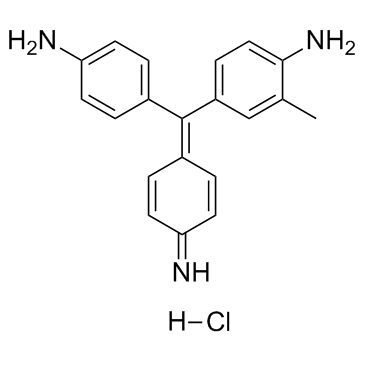
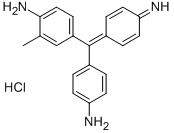
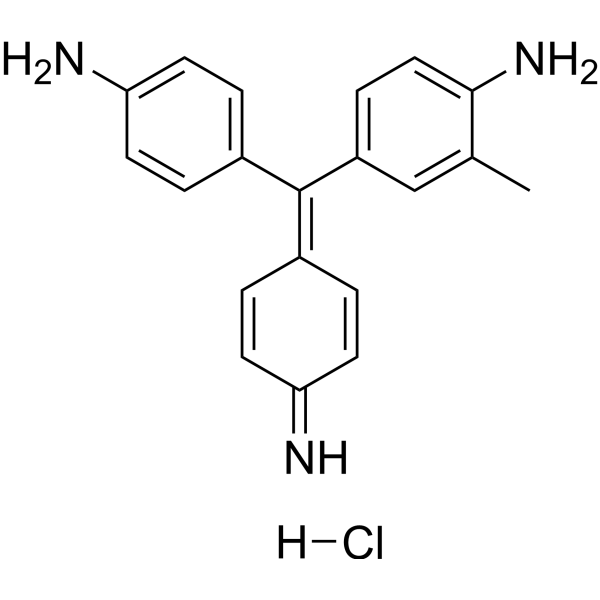

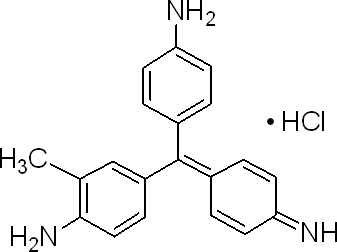
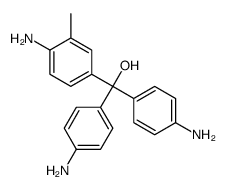





 浙公网安备 33010802013016号
浙公网安备 33010802013016号